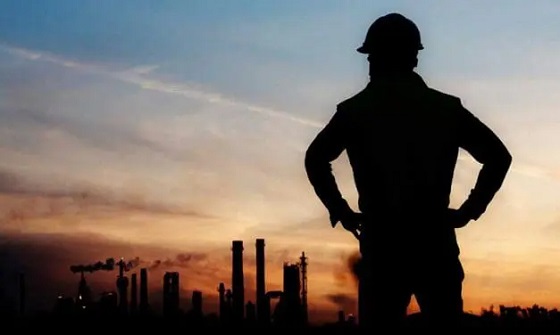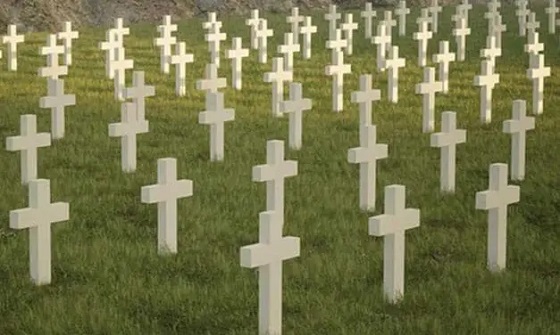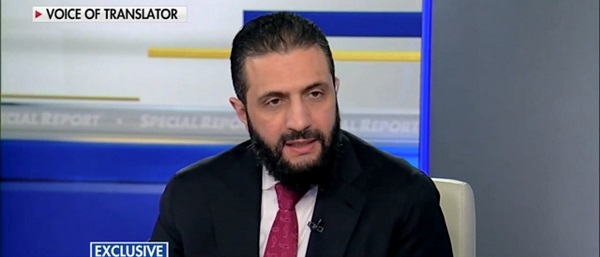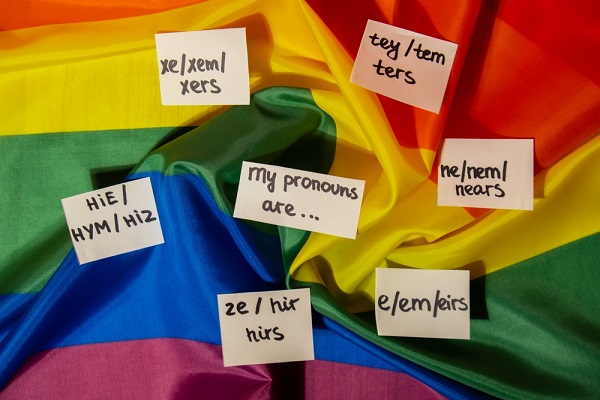Opinion
Turbans vs. Motorcycle Helmets. Religious Freedom vs Safety?

Should safety trump religious freedom?
That sensitive topic may need to be visited by our Alberta provincial government if it prepares to debate making turban-wearing Sikhs exempt from current motorcycle helmet laws. They will likely need to discuss exemptions for motorcycle riders and also side-car occupants. There are jurisdictions that have these exemptions. Sikhs are allowed to ride without a helmet in British Columbia and Manitoba.
Ontario, after serious study, decided not to allow turban-wearing Sikhs to ride a motorcycle without wearing a helmet, a decision the Canadian Sikh Association called “deeply” disappointing.
Premier Kathleen Wynne of Ontario had also struggled with striking the right balance between public safety and religious accommodation. A bill was brought to the Ontario legislature years ago requesting an exemption. After much thought and consultations it was not supported.
“After careful deliberation, we have determined that we will not grant this type of exemption as it would pose a road safety risk,” she wrote in a letter to the Canadian Sikh Association. “The association has been a strong advocate for an exemption and presented “compelling arguments,” Wynne wrote. “However, the Ontario government has carefully monitored, and considered, the soundness of accommodating your position, drawing on relevant academic research, key legal decisions, and consultations with caucus and the community.”
“Ultimately, the safety of Ontarians is my utmost priority, and I cannot justify setting that concern aside on this issue.” The same would be said in Alberta.
The mandatory helmet law is based on extensive research that shows the high risk of injury and death for motorcyclists who ride without a helmet. Mortality rates have gone down 30 per cent and head injury rates down 75 per cent in jurisdictions with such laws.
Courts have also found that Ontario’s law doesn’t infringe on the Charter of Rights and Freedoms or the Ontario Human Rights Code, so Alberta would not have to worry, then, if a court challenge was to be launched.
So should safety trump religious freedom? That is a tough one, but so is the rights of individuals as a whole. There is a fine line between the wishes of the few versus the needs of the community.
The turban issue is also complicated by it’s history and it’s geographical relevance. If the turban can be altered to identify nobility, carry small weapons and for various castes and events, why could it not be altered for safety measures.
I found this information on the internet’s wikipedia: All Sikh Gurus since Guru Nanak have worn turbans. However, covering one’s hair with a turban was made an official policy by Guru Gobind Singh, the tenth Guru of the Sikhs. The main reasons to wear turban are to take care of the hair, promote equality, and preserve the Sikh identity. Sikh women may wear a turban if they wish.
Sikhs do not cut their hair, as a religious observance. The turban protects the hair and keeps it clean. As Sikhs only form 2% of India’s population, their turbans help identify them, also. When he institutionalized the turban as a part of the Sikh identity, Guru Gobind Singh said, “My Sikh will be recognized among millions.”
If a turban was institutionalized as a personal hygiene measure and as an identification and recognition factor then it should allowed to be covered temporarily for safety factors, but I am not an expert, but just as a questioner.
How our current provincial government deals with this issue could set off some debate beyond the rights of religious rights. How about human rights? Should I be ordered to wear a helmet because I am not of a certain religion?
There will be discussion about allowing the exemption on smaller highways and urban streets, but a head injury at 60 km/h is still severe. An exemption to an exemption, would make less sense. If they wear a helmet on Hwy 2 then they can wear a helmet on residential streets.
If the facts bear out that helmets do not prevent or lessen head injuries and mortality rates then do away with mandatory helmet laws. But if the facts show they do prevent or lessen head injuries and mortality rates then no exemptions.
That is just my thoughts.
Energy
Canada’s oilpatch shows strength amid global oil shakeup

This article supplied by Troy Media.
Global oil markets are stumbling under too much supply and too little demand but Canada’s energy sector is managing to hold its own
Oil prices are sliding under the weight of global oversupply and weakening demand, but Canada’s oilpatch is holding steady—perhaps even thriving—as others flounder.
Crude is piling up in tankers, major producers are flooding the system, and demand is fading fast. According to a Windward report cited by Oilprice.com, the amount of oil held in floating storage—tankers sitting offshore waiting for buyers —has hit record highs. Sanctions on Russian and Iranian crude have sidelined entire fleets. Meanwhile, Middle East cargoes continue to pour in, keeping global supply bloated.
Gunvor CEO Torbjorn Tornqvist called the scale “unprecedented,” warning the market would be flooded overnight if sanctions against Russian and Iran were lifted.
And there’s more coming. U.S. crude production has hit a new record of 13.8 million barrels per day in August. And China’s Changqing oilfield just surpassed 20 million tonnes in cumulative output, and national totals have topped 400 million tonnes of oil equivalent this year. More barrels. More pressure. Less price support.
At the same time, demand is slipping. U.S. gasoline use is down. Global shipping activity has slowed. JPMorgan just trimmed its 2025 oil demand forecast by 300,000 barrels per day. China’s manufacturing sector shrank for the seventh month in a row.
Japan’s purchasing index dropped to an 18-month low. And recession fears are back in the headlines.
OPEC+ tried to calm the chaos by announcing a modest increase in output this December, with a pause on future hikes. But the move didn’t move markets. Then Saudi Arabia cut its selling prices to Asia, a clear signal that the kingdom sees weak demand ahead.
In short, it’s messy out there. But not everywhere.
Amid this global downturn, Canada’s energy sector stands out for one rare quality: resilience. While other producers are scaling back or scrambling to adapt, Canada’s oilpatch is quietly outperforming.
A recent CBC News report highlighted the sector’s staying power and why it’s better positioned than its U.S. counterparts. “The companies that have survived here are the companies that have been able to adapt,” said Patrick O’Rourke, managing director at ATB Capital Markets. “It’s effectively Darwinism.”
It’s also smart design. Canada’s oilsands—primarily in Alberta—are expensive to build but cheap to run. Once the upfront costs are covered, producers can keep pumping for decades with relatively low reinvestment. That means even in a
downturn, output stays strong.
Dane Gregoris of Enverus says Canada’s conventional sector is holding up better than the U.S. shale patch. Why? Canadian oil producers operate more efficiently, with fewer legal and logistical barriers tied to land access and ownership than their U.S. shale counterparts. They also benefit from lower operating costs and are less dependent on relentless drilling just to maintain output.
And now, they finally have a way to get more oil out.
The long-delayed Trans Mountain pipeline expansion is finally complete. It delivers Alberta crude to B.C.’s tidewater and, from there, to Asian markets. That access, once a significant limitation for Canadian producers, is now a strategic advantage. It’s already helping offset lower global prices.
Canada’s energy sector also benefits from long-life assets, slow decline rates and political stability. We have a reputation for responsible regulation, but that same system can slow development and limit how quickly we respond to shifting global demand. We can offer a stable, secure supply but only if infrastructure and regulatory hurdles don’t block access to it.
And for Canadians, that matters. Oil prices don’t just fuel industry headlines; they shape provincial and national budgets, drive investment and underpin jobs across the country. Most producers around the world are bracing for pain but Canada may be bracing for opportunity to expand its presence in Asian markets, secure long-term export contracts and position itself as a reliable supplier in a turbulent global landscape.
None of this means Canada is immune. If demand collapses or sanctions lift, prices could sink further. But in a volatile global landscape, Canada isn’t scrambling—it’s competing.
While others slash forecasts, shut wells or hope for an OPEC rescue, Canada’s energy producers are doing something rare in today’s oil market: holding the line.
Toronto-based Rashid Husain Syed is a highly regarded analyst specializing in energy and politics, particularly in the Middle East. In addition to his contributions to local and international newspapers, Rashid frequently lends his expertise as a speaker at global conferences. Organizations such as the Department of Energy in Washington and the International Energy Agency in Paris have sought his insights on global energy matters.
Troy Media empowers Canadian community news outlets by providing independent, insightful analysis and commentary. Our mission is to support local media in helping Canadians stay informed and engaged by delivering reliable content that strengthens community connections and deepens understanding across the country
Business
P.E.I. Moves to Open IRAC Files, Forcing Land Regulator to Publish Reports After The Bureau’s Investigation

Following an exclusive report from The Bureau detailing transparency concerns at Prince Edward Island’s land regulator — and a migration of lawyers from firms that represented the Buddhist land-owning entities the regulator had already probed — the P.E.I. Legislature has passed a new law forcing the Island Regulatory and Appeals Commission (IRAC) to make its land-investigation reports public.
The bill — introduced by Green Party Leader Matt MacFarlane — passed unanimously on Wednesday, CTV News reported. It amends the Lands Protection Act to require IRAC to table final investigation reports and supporting documents in the Legislature within 15 days of completion.
MacFarlane told CTV the reform was necessary because “public trust … is at an all-time low in the system,” adding that “if Islanders can see that work is getting done, that the (LPA) is being properly administered and enforced, that will get some trust rebuilt in this body.”
The Bureau’s report last week underscored that concern, showing how lawyers from Cox & Palmer — the firm representing the Buddhist landholders — steadily moved into senior IRAC positions after the regulator quietly shut down its mandated probe into those same entities. The issue exploded this fall when a Legislative Committee subpoena confirmed that IRAC’s oft-cited 2016–2018 investigation had never produced a final report at all.
There have been reports, including from CBC, that the Buddhist landholders have ties to a Chinese Communist Party entity, which leaders from the group deny.
In the years following IRAC’s cancelled probe into the Buddhist landholders, The Bureau reported, Cox & Palmer’s general counsel and director of land joined IRAC, and the migration of senior former lawyers culminated this spring, with former premier Dennis King appointing his own chief of staff, longtime Cox & Palmer partner Pam Williams, as IRAC chair shortly after the province’s land minister ordered the regulator to reopen a probe into Buddhist landholdings.
The law firm did not respond to questions, while IRAC said it has strong measures in place to guard against any conflicted decision-making.
Reporting on the overall matter, The Bureau wrote that:
“The integrity of the institution has, in effect, become a test of public confidence — or increasingly, of public disbelief. When Minister of Housing, Land and Communities Steven Myers ordered IRAC in February 2025 to release the 2016–2018 report and reopen the investigation, the commission did not comply … Myers later resigned in October 2025. Days afterward, the Legislative Committee on Natural Resources subpoenaed IRAC to produce the report. The commission replied that no formal report had ever been prepared.”
The Bureau’s investigation also showed that the Buddhist entities under review control assets exceeding $480 million, and there is also a planned $185-million campus development in the Town of Three Rivers, citing concerns that such financial power, combined with a revolving door between key law firms, political offices and the regulator, risks undermining confidence in P.E.I.’s land-oversight regime.
Wednesday’s new law converts the expectation for transparency at IRAC, voiced loudly by numerous citizens in this small province of about 170,000, into a statutory obligation.
Housing, Land and Communities Minister Cory Deagle told CTV the government supported the bill: “We do have concerns about some aspects of it, but the main principles of what you’re trying to achieve are a good thing.”
The Bureau is a reader-supported publication.
To receive new posts and support my work, consider becoming a free or paid subscriber.
-

 Business1 day ago
Business1 day agoCarney shrugs off debt problem with more borrowing
-

 armed forces2 days ago
armed forces2 days agoWhy we keep getting Remembrance Day wrong
-

 Alberta15 hours ago
Alberta15 hours agoHow economic corridors could shape a stronger Canadian future
-

 MAiD1 day ago
MAiD1 day agoQuebec has the highest euthanasia rate in the world at 7.4% of total deaths
-

 Crime2 days ago
Crime2 days agoCBSA Bust Uncovers Mexican Cartel Network in Montreal High-Rise, Moving Hundreds Across Canada-U.S. Border
-

 Addictions20 hours ago
Addictions20 hours agoCanada is divided on the drug crisis—so are its doctors
-

 National15 hours ago
National15 hours agoConservative bill would increase penalties for attacks on places of worship in Canada
-

 Daily Caller2 days ago
Daily Caller2 days agoEx-Terrorist Leader Goes On Fox News, Gives Wild Answer About 9/11












